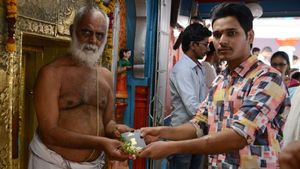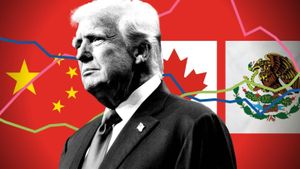The Supreme Court of India recently faced the heartbreaking task of addressing the tragic Maha Kumbh stampede, which occurred on January 29, 2025, claiming at least 30 lives and injuring around 60 others. The incident took place during one of the country's most revered Hindu events, which drew millions of devotees.
On February 3, 2025, the apex court reviewed a public interest litigation (PIL) filed by advocate Vishal Tiwari, seeking legal action against authorities for their alleged negligence leading to the overcrowding and subsequent stampede at the Maha Kumbh Mela held in Prayagraj, Uttar Pradesh. This event is considered sacred by Hindus and has been marked by significant attendance since its commencement on January 13.
During the hearing, Chief Justice Sanjiv Khanna and Justice Sanjay Kumar labeled the stampede as "an unfortunate incident". The Chief Justice expressed concern over the tragedy but urged the petitioner to seek redressal through the Allahabad High Court instead, stating, "It is something of concern and it is an unfortunate incident. But move the (Allahabad) High Court.”
Senior advocate Mukul Rohatgi represented the Uttar Pradesh government, informing the court of the judicial inquiry already set up to investigate the stampede. He highlighted the existence of similar petitions already addressed by the Allahabad High Court, which suggested jurisdictional limitations prevented the Supreme Court from engaging with the current case.
The petition filed by Tiwari emphasized the administration's failures, underscoring past incidents of stampede during Kumbh Melas, tracing back to the infamous 1954 stampede. It argued systemic issues with crowd management and the need for accountability among officials entrusted with public safety during such significant gatherings.
Details provided by the petition mentioned the consistent nature of stampede occurrences, pointing out the drastic conditions resulting from apparent lapses and negligence. Tiwari's legal documentation argued, "The stampede depicts the drastic condition and fate of people due to the lapses, negligence, and utter failure of administration purported by the government authorities."
Continuing with its broader perspective, the petition called for the Uttar Pradesh government to file a status report on the incident, detailing the administrative response and suggested measures to avoid similar catastrophes. The document also demanded legal action against responsible parties for their failures during the Maha Kumbh.
Despite the court's rejection of hearing the PIL, discussions surrounding safety measures and guidelines have ramped up, especially concerning VIP movement at events where crowd safety is of utmost importance. The push for enhanced safety measures reflects growing concerns about the adequacy of existing procedures and the failures observed during the recent stampede.
Public sentiment has echoed similar frustrations, culminating during the Budget sessions of Parliament, where opposition leaders clashed with the ruling party, demanding accountability and transparency from the Uttar Pradesh government. Accusations were leveled against Chief Minister Yogi Adityanath for allegedly concealing the actual fatalities from the stampede for several hours, raising questions about governmental trustworthiness and efficiency during crises.
Notably, the PIL observed the irony at play; at such massive gatherings as the Kumbh, where millions gather to celebrate their faith, the overwhelming lack of adequate crowd management often leaves the most vulnerable—often poor and unprotected—at the mercy of mismanagement.
The request for action and safety improvements transitioned to urgent appeals for systems to facilitate proper communication with devotees to avoid casualties during future events. Essential elements requested included multilingual announcements, banners outlining crowd control measures, and electronic messaging systems to disseminate safety guidelines effectively.
Through the lens of this unfortunate incident, stakeholders and leaders at multiple levels of governance are now called upon to revisit their strategies and policies surrounding large-scale religious events. Although the Supreme Court has redirected the grievances to the Allahabad High Court, the urgency remains to mitigate future disasters through effective planning and oversight.
The Maha Kumbh is not just another religious event; it embodies faith for millions, representing the very essence of communal worship. Ensuring safety and preventing tragedies like the Prayagraj stampede are fundamental responsibilities borne by all levels of government, necessitating immediate action to safeguard the spirit and sanctity of such monumental gatherings.



